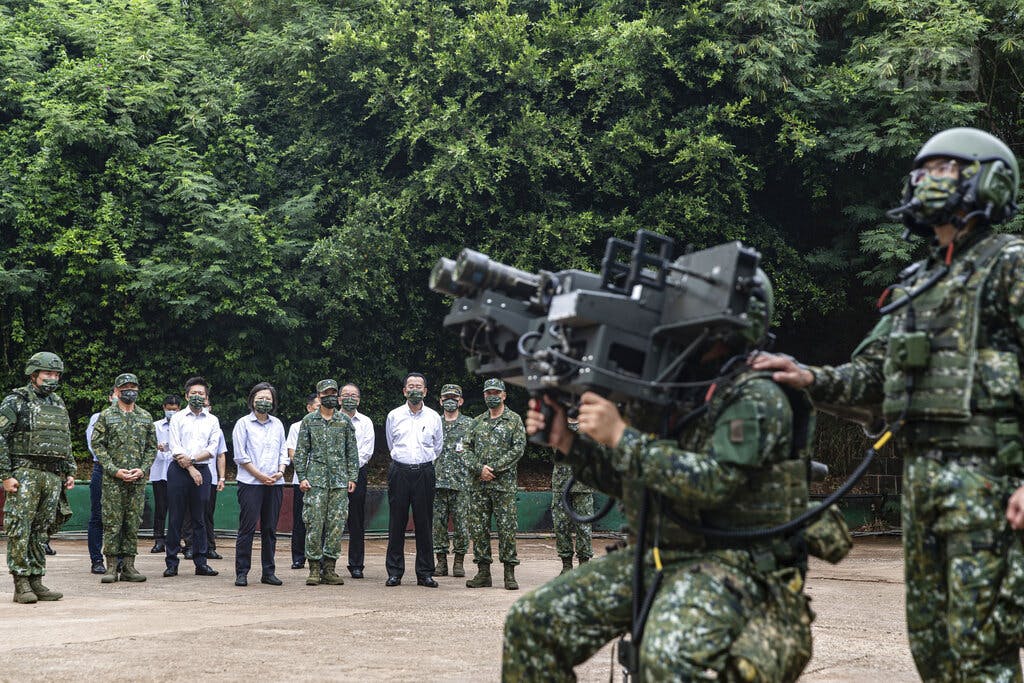Beijing’s Response Awaited After First Shots Fired — Albeit at a Tiny Drone on Quemoy — in Battle of Taiwan
President Xi is not expected to shrug off Free China’s downing of a non-military drone.

SEOUL — Taiwan has fired the first shots in its David-and-Goliath duel with mainland China, challenging President Xi to avenge the downing of a Chinese aircraft. It now awaits his response.
Mr. Xi was not expected to shrug off the incident involving a non-military drone that was harassing the island of Kinmen, also known as Quemoy, six miles across a bay from a major Chinese city. The question is how his forces will retaliate for Taiwan troops shooting it down, bringing the conflict to the edge of bloodshed.
It was the first time Taiwan had fired on the Chinese, raising the temperature on both sides.
Spurred on by the president, Tsai Ing-wen, Taiwan scrambled air force and navy planes Thursday in response to a Chinese display of military might in the Taiwan Strait separating Taiwan from the mainland. Taiwan also controls both Kinmen and Matsu off China’s Fujian Province. From Kinmen one can see the tall buildings of the port of Xinmen.
In a spiraling game of intimidation, Taiwan’s defense ministry said China had deployed 53 military aircraft and eight warships. Among the aircraft crossing the median line in the center of the Taiwan Strait were 10 Shenyang J-11 fighters and four Xi’an JH-7 bombers plus anti-aubmarine planes and a “third-generation early warning and control plane.”
Never before the shootdown of the drone over Kinmen, however, had either side actually opened fire on the other. Taiwan forces on Kinmen challenged Chinese harassment in a flurry of shots at the drone a month after the American House speaker, Nancy Pelosi, visited Taiwan. During and after her visit, Chinese forces surrounded the self-governing island state, conducting live-fire war games for 10 days.
Before Ms. Tsai ordered the “strong countermeasures” that resulted in the drone’s downing, her soldiers had thrown rocks at the aircraft in symbolic but otherwise useless displays of anger at repeated intrusions into Kinmen’s air space. The rock-throwing disclosed their frustration at not being ordered simply to shoot down the drones, whose mission is surveillance and intimidation.
Now, the Kinmen Defense Command has released basic guidelines for deciding when to fire on drones.
The rules, as reported by Taiwan’s Central News Agency, call for “firing warning flares, reporting the incursion, expelling the drone and ultimately shooting it down.” CNA said the soldiers had indeed “fired warning shots,” though whether the drone’s handlers on the mainland were aware of them was not clear.
The popular Ms. Tsai, first elected as Taiwan president in 2016 and re-elected by a wide margin in 2020, has avoided pressure to declare Taiwan an independent country, a step that would infuriate China, which has always claimed Taiwan as a breakaway province.
In the face of Chinese military exercises that began with Mrs. Pelosi’s visit, Ms. Tsai has also shown a steely toughness, encouraging Taiwan troops and vowing no compromise. While the exercises have tapered off, Chinese warships scour the waters around Taiwan and warplanes constantly fly into Taiwan’s air defense identification zone.
Far from showing weakness or appealing to China for mercy, Ms. Tsai has stated, “Let the military guard the country without fear and with solid confidence.”
Those bold words are all the more meaningful for Kinmen and Matsu, considering their proximity to Fujian Province. Both Kinmen, which includes several islets, and Matsu, a cluster of three-dozen islets, came under intense daily artillery fire from the mainland in the first few years after the victory of Mao Zedong’s Red Army on the mainland in 1949.
The American position is unclear: Would America’s “commitment” to defend Taiwan extend to Kinmen and Matsu? Neither the White House nor the state department has come up with a definitive answer.

